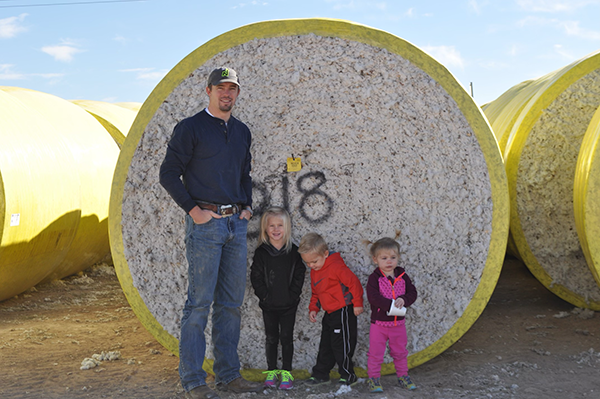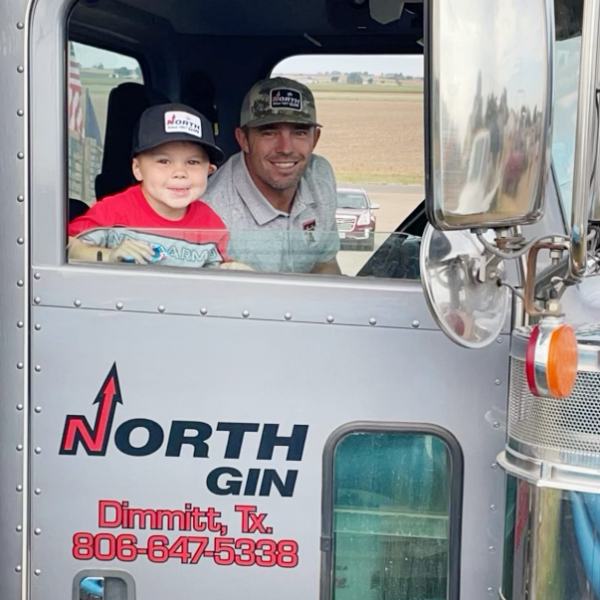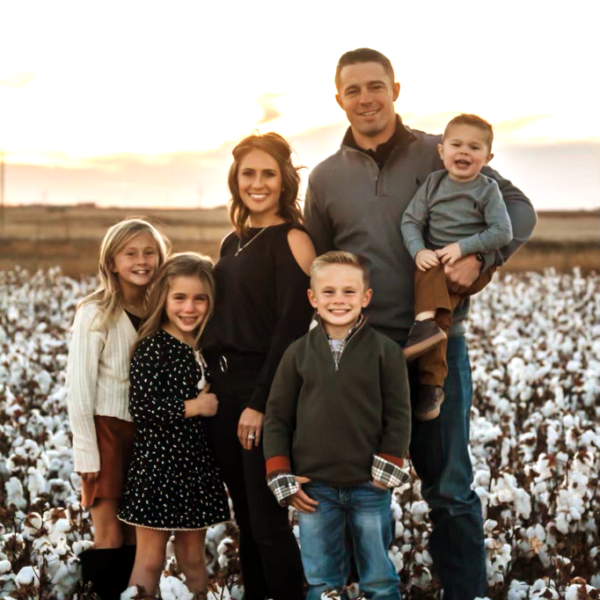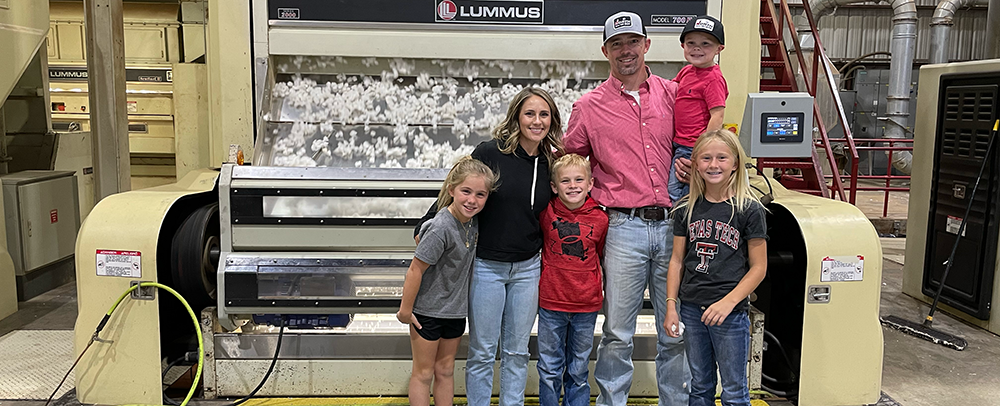
Jordy, his wife Maegan and their children: Aubrey (11), Ace (10), Harper (9) and Tagg (5)
By Kara Bishop
Q: Did you grow up in agriculture?
A: I grew up in Hart, Texas, and my dad farmed cotton, corn and wheat in Castro County. Farming has always been a passion of mine, and I still remember setting irrigation tubes and moving gated pipe. That was back when we had more water in the area than we do now. My kids will never know anything about that.
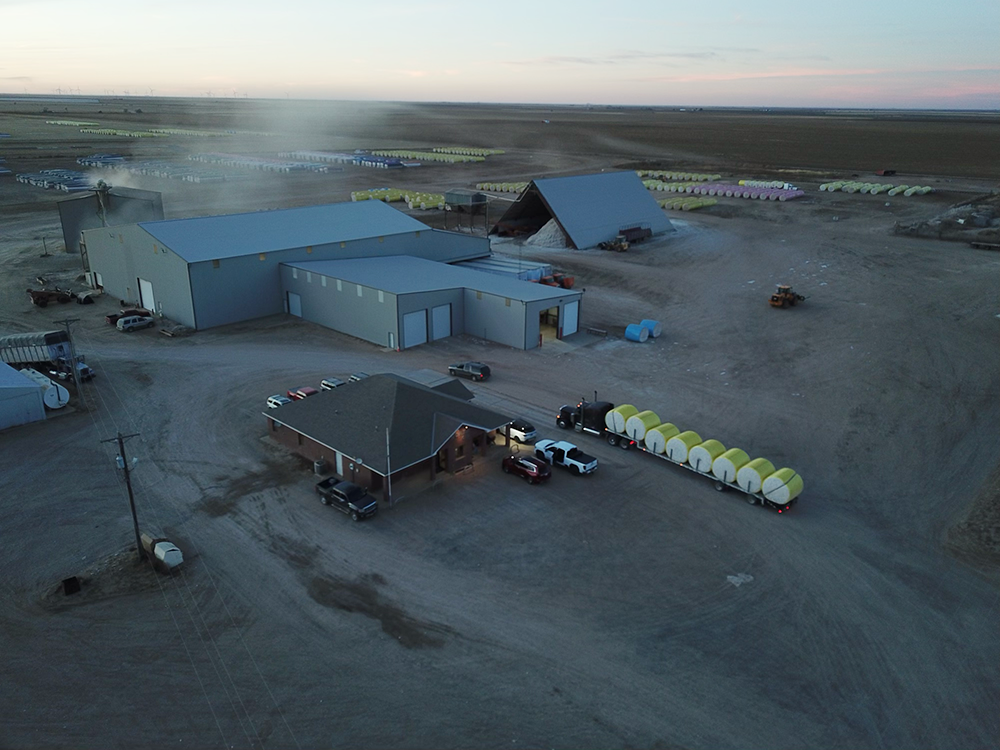
North Gin in Dimmitt, Texas.
Q: Where did you go to school (high school and college)?
A: I went to high school at Nazareth Independent School District and was really into sports. Sports and farming were my interests. We were competitive in football, basketball, baseball, track, and golf and I was interested in playing football in college. I decided to walk on to the Texas Tech University (TTU) football team. I played on special teams and at nickel/dime positions and was on a full scholarship the last two and a half years I played. It was a great experience and provided me with some friends that I still have today. I was on the team in 2008 when we made a great run and was a part of the thrilling game when we beat University of Texas at home.
Q: What did you major in while playing football?
A: I started out in mechanical engineering — I’m a numbers guy. However, playing collegiate football was a full-time job in and of itself, so I decided to change my major to agricultural economics. It was nice to be back with ag people. My transcript does look a little funny, though — it’s not every day you have advanced calculus and differential equations as electives.
Q: What did you do after graduation?
A: I worked for a commercial lending group in Amarillo, Texas, as an analyst working my way up to credit underwriter. I was there for roughly four years when a loan officer position opened at People’s Bank back in Nazareth. My wife and I jumped on the opportunity to move back home.
Q: How did you end up at North Gin?
A: About a year after we moved back, I received a phone call from Jim Bradford. He indicated he was looking for someone to come run the gin. I was familiar with cotton production and had a farming background, but I didn’t know anything about ginning. Jim knew that and worked to teach me everything. He has been an excellent mentor. It took a year or two before I fully saw the operations of a gin season and how everything functioned. Now I’m heading into my 10th crop.
Q: What is working with Jim Bradford like?
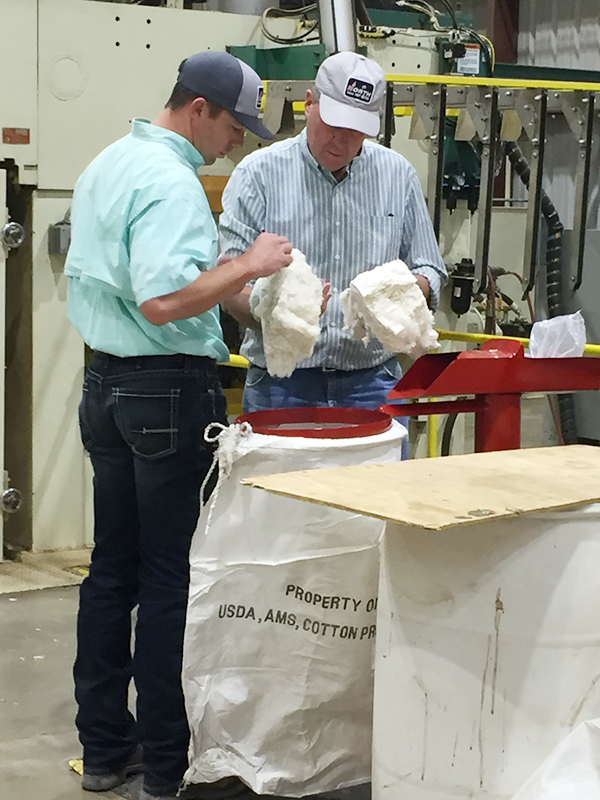
Jordy and Jim examine cotton samples at the gin.
A: Jim makes it easy to come to work every day. He is laid back and always finds a way to find the joy in the day. I have learned so much about how to handle different situations – good or bad. He never loses his cool and always handles business professionally. He is very generous and always looks to help those in need. I don’t know if there are words to adequately capture the totality of Jim Bradford. He is a wonderful mentor and an even better friend.
Q: What was the most challenging part of beginning your career with North Gin?
A: Learning the ins and outs of the gin itself was the most challenging part. Even now, I wouldn’t call myself an expert. We have an amazing gin superintendent, Johnny Emerson. With Johnny, we can always count on the gin being ready to run when the season begins. He’s the best.
Q: What is the average number of bales ginned at North Gin?
A: I wouldn’t say there’s an average number as much as a range that we stay within. For the 2021 crop, we ginned 47,000 bales. The two years before that we did between 20,000 and 30,000. In 2018, we ginned 72,000. Anything below 25,000 is considered below normal for us and we ginned 18,150 bales for the 2022 season.
Q: What’s the biggest challenge for you in your daily operations?
A: Our biggest battle every year is getting acres planted. This area is predominantly ruled by the beef cattle and dairy industries, so there are a lot of mouths to feed. The better irrigated acres in this area have been sold to the dairies. Some dairies are planting a little cotton where their water has dropped off, but the majority of them are planting some sort of feed like sorghum silage or corn silage. And cotton producers plant some, too, where they have water because the prices are good. We need a good 10 to 15 cent rally in the futures prices for cotton or we may lose more acreage in this area this crop season.
Q: What is something you wish more people understood about agriculture?
A: We hear a lot about sustainability these days, and I just wish more people understood the true nature of a farmer. They want to farm the land for generations to come, so they use sustainability practices to ensure that future. Don’t come in here and tell farmers how to be sustainable — they already wrote the book.
Jordy Rowland: Family Man
Jordy met his wife, Maegan in Kindergarten. They began dating their junior year of high school and were married in the summer of 2009. They live in Nazareth and have four children: Aubree (11), Ace (10), Harper (9) and Tag (5).
The Rowlands are active members of the First Baptist Church in Dimmitt, and Jordy’s love of sports has been passed on to his children. Whether its flag football or little dribblers, Jordy is usually coaching one or more teams on his Saturdays. “And, sometimes, I find time to play golf,” he adds.
